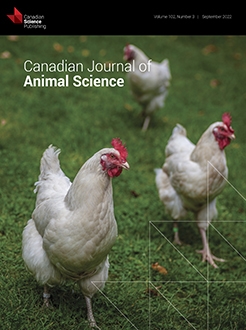Molecular marker-assisted selection (MAS) provides an efficient tool for pig breeding. In this study, according to the literature, we selected eight effective or causal mutations from eight functional genes, including five causal mutations in PHKG1 (rs330928088), MUC13 (rs319699771), IGF2 (g.3072G>A), VRTN (g.20311_20312ins291), and MYH3 (XM_013981330.2:g.-1805_-1810del) genes, and three effective mutations in LIPE (rs328830166), LEPR (rs45435518), and MC4R (rs81219178) genes, to investigate their potential breeding effect in 418 Lulai pigs. The linear model was used to analyse the association between mutations and intramuscular fat (IMF) content, average backfat thickness, and muscle moisture %. The results revealed that amongst the three effective mutations, only the mutation in the LEPR gene, which affects IMF deposition, was significantly associated with IMF content. However, the other molecular markers were not significantly associated with the affected traits reported in previous studies, and these mutations are ineffective for MAS in the Lulai black pig population. Therefore, causal mutations in PHKG1, IGF2, and VRTN genes, and an effective mutation in LEPR gene could be used as effective breeding makers for MAS in Lulai pigs. These results can provide helpful information for further breeding in Lulai black pigs.
La sélection assistée par marqueur moléculaire (MAS — « molecular marker-assisted selection ») offre un outil efficace pour la reproduction des porcs. Dans cette étude, selon la littérature, nous avons choisi huit mutations efficaces et causales provenant de huit gènes fonctionnels, incluant cinq mutations causales dans les gènes PHKG1 (rs330928088), MUC13 (rs319699771), IGF2 (g.3072G>A), VRTN (g.20311_20312ins291) et MYH3 (XM_013981330.2:g.-1805_-1810del), et trois mutations efficaces dans les gènes LIPE (rs328830166), LEPR (rs45435518) et MC4R (rs81219178), afin d’étudier les effets potentiels de celles-ci sur la reproduction de 418 porcs Lulai. Le modèle linéaire a été utilisé pour analyser l’association entre les mutations et la teneur en gras intramusculaire (IMF — « intramuscular fat »), l’épaisseur moyenne du gras dorsal (ABT — « average backfat thickness »), et le pourcentage d’humidité dans le muscle (MMP — « muscle moisture percent »). Les résultats ont révélé que parmi les trois mutations efficaces, seule la mutation dans le gène LEPR, qui a un effet sur le dépôt d’IMF, était associée de façon significative à la teneur en IMF. Par contre, les autres marqueurs moléculaires n’étaient pas associés de façon significative avec les caractéristiques affectées rapportées dans les études préalables, et ces mutations sont non efficaces pour la MAS dans la population de porcs noirs Lulai. Donc, les mutations causales dans les gènes PHKG1, IGF2 et VRTN, et une mutation efficace dans le gène LEPR pourraient être utilisées comme marqueurs efficaces de reproduction pour la MAS chez les porcs Lulai. Ces résultats pourraient offrir de l’information utile pour la reproduction ultérieure chez les porcs noirs Lulai. [Traduit par la Rédaction]





